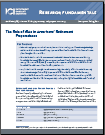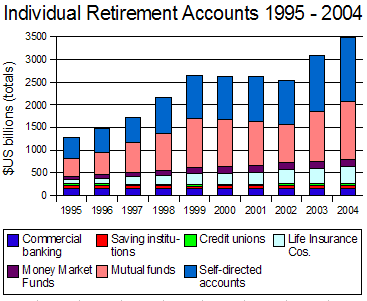Major Reform of Pension Laws Will Alter Capital Flows
by John Schroy filed under Fund Shares, Individual Investors, Fund Managers
On August 3, 2020, by a vote of 93 to 5, the US Senate passed the “Pension Protection Act of 2006″, already approved by the House of Representatives on July 28, 2020 and now going to President Bush to be signed into law.
This massive bill (907 pages) is a major piece of legislation that, like ERISA in the 1970s, will effect capital flows in the US market over the next generation.
Links to the full text of this law and related discussions can be found on BenefitsBlog.
A Boon For Wall Street?
The Wall Street Journal has already headlined some of the expected effects on capital flows.
In the lead editorial on August 4, 2020, “The Pension Era, R.I.P.”, the Journal announced that this law “signals the end of the old, defined-benefit pension era.”
In an article on August 7, 2020, the WSJ announced, “Pension Bill Promises Windfall for Fund Firms”, citing research by the Vanguard Group projecting an additional 5.5 million new savers in 401(k) plans.
The article also states that passage of the bill was helped along by heavy lobbying by the mutual fund industry trade organization, the Investment Company Institute. The Act allows, but does not require, automatic enrollment in 401(k) plans and permits employers to give “investment advice” to plan participants.
The Law of Unintended Consequences
History suggests that a law as complex as the Pension Protection Act of 2006 is likely to be laced with obscure provisions that will have unintended consequences.




